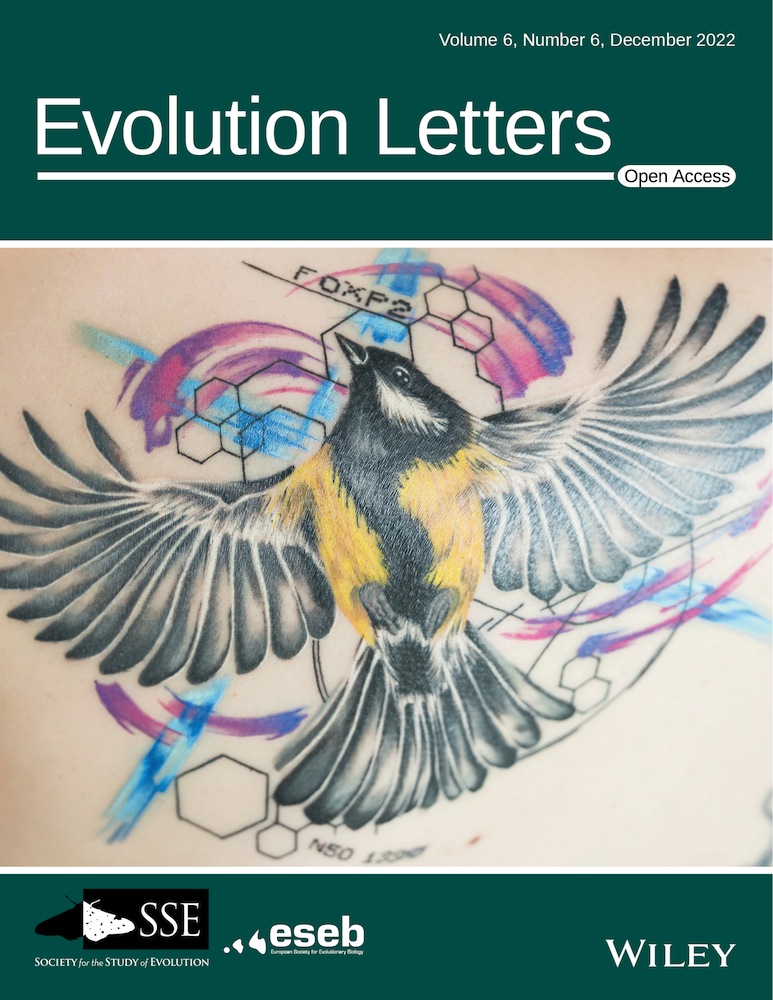The evolution of genetic covariance and modularity as a result of multigenerational environmental fluctuation
IF 3.7
1区 生物学
Q2 EVOLUTIONARY BIOLOGY
引用次数: 0
Abstract
Abstract The genetic covariance between traits can affect the evolution of a population through selection, drift, and migration. Conversely, research has demonstrated the reciprocal effect of evolutionary processes on changing genetic covariances, in part through mutational covariance, correlational selection, and plasticity. In this article, we propose that correlated changes in selective optima over generations can cause the evolution of genetic covariance and the G-matrix in such a way that the population can, in the future, evolve faster. We use individual-based simulations of populations exposed to three types of changing environments that differ in the correlation of the change between selective pressures. Our simulation experiments demonstrate that selection pressures for different traits changing in a correlated pattern over generations can lead to stronger trait correlations compared to the case with independently changing selective optima. Our findings show that correlated selective pressures result in significantly higher genetic trait covariance and that pleiotropy accounts for the majority of the difference in covariance between treatments. We also observe that the mutational variance evolves according to the environment that the populations were exposed to. Moreover, we show that clustered patterns of changes in selection can allow the evolution of genetic modularity. We show that the pattern of change in the selective environment affects the pace at which fitness evolves, with populations experiencing correlated change in optima having on average higher mean fitness than those experiencing uncorrelated environment change.遗传协方差和模块性的进化是多代环境波动的结果
性状间的遗传协方差可以通过选择、漂变和迁移影响种群的进化。相反,研究已经证明了进化过程对改变遗传协方差的相互作用,部分通过突变协方差、相关选择和可塑性。在这篇文章中,我们提出,世代间选择最优的相关变化可以导致遗传协方差和g矩阵的进化,从而使种群在未来进化得更快。我们使用基于个体的种群模拟暴露于三种不同类型的变化环境中,这些环境在选择压力之间变化的相关性方面有所不同。我们的模拟实验表明,与独立变化的选择最优条件相比,不同性状的选择压力在几代之间以相关模式变化,可以导致更强的性状相关性。我们的研究结果表明,相关的选择压力导致显著更高的遗传性状协方差,而多效性是处理之间协方差差异的主要原因。我们还观察到,突变变异根据种群所暴露的环境而演变。此外,我们还表明,选择变化的集群模式可以允许遗传模块化的进化。我们发现,选择性环境的变化模式会影响适应性进化的速度,在最优状态中经历相关变化的种群平均平均适应性高于那些经历不相关环境变化的种群。
本文章由计算机程序翻译,如有差异,请以英文原文为准。
求助全文
约1分钟内获得全文
求助全文
来源期刊

Evolution Letters
EVOLUTIONARY BIOLOGY-
CiteScore
13.00
自引率
2.00%
发文量
35
审稿时长
10 weeks
期刊介绍:
Evolution Letters publishes cutting-edge new research in all areas of Evolutionary Biology.
Available exclusively online, and entirely open access, Evolution Letters consists of Letters - original pieces of research which form the bulk of papers - and Comments and Opinion - a forum for highlighting timely new research ideas for the evolutionary community.
 求助内容:
求助内容: 应助结果提醒方式:
应助结果提醒方式:


